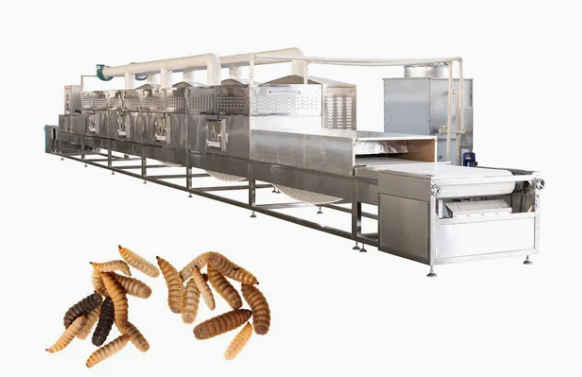العوامل الرئيسية المؤثرة على أسعار أجهزة تقشير الفول السوداني
1. القدرة الإنتاجية ومعدل الإنتاج
القدرة الإنتاجية هي عامل مهم في تحديد كم ستكلف ماكينة تقشير جوز الكاشو. الماكينات الأكثر كفاءة عادةً تحتوي على تقنيات أكثر تطورًا وهي أكثر تكلفة. إنها استثمار يمكن أن يزيد من الإنتاجية والمردود، وهو أمر مهم بشكل خاص عند العمل بكميات كبيرة. لفهم أنواع الماكينات التي نحتاجها وسعرها، يجب علينا النظر إلى حجم العمليات، أي كم طنًا من جوز الكاشو تقوم الشركة بمعالجتها يوميًا في المتوسط. يمكن للمصنعين تعظيم كفاءة الإنتاج والفعالية التكلفة من خلال ضبط إنتاجية الماكينة لتتناسب مع المتطلبات التشغيل. التركيز على مستوى الإنتاج المناسب يضمن أن الجهاز سيحقق المتطلبات دون العمل بأقل من القدرة أو الاستثمار الزائد.
2. مستوى الأتمتة (يدوي مقابل أتمتة كاملة)
يؤثر مدى الأتمتة بين آلات تقشير المكسرات بشكل كبير على سعرها. عادةً ما تكون النماذج fully automatic أكثر تكلفة وتتميز بتقنية متطورة توفر دقة أعلى وأداءً أفضل. وهي مثالية للتطبيقات التجارية الكثيفة، وتحديدًا لتقليل تكاليف العمالة والنظامية في جودة المنتج. أما الآلات اليدوية فهي اقتصادية أيضًا ومثالية للمشروعات الصغيرة. يعتمد الاختيار على حجم الإنتاج والهدف التطبيقي المحدد (حيث أن الأنظمة fully automatic لديها القدرة على تعويض تكلفتها الأولية الأعلى من خلال زيادة الإنتاجية واستمرارية الجودة).
3. سمعة العلامة التجارية ومكانة الصانع
بالنسبة لجهاز تقشير جوز الكاشو، فإن سمعة العلامة التجارية لها علاقة وثيقة بسعر الجهاز. العلامات التجارية المرموقة ذات السمعة الجيدة من حيث الجودة والموثوقية في مجال المachinery الزراعية تبيع عادةً بأسعار مرتفعة. بالإضافة إلى ذلك، قد تتأثر الأسعار بموقع المورد، وذلك يعتمد بشكل رئيسي على رسوم الشحن والعوامل المتعلقة بالراحة. في بعض الدول المعروفة بإنتاجها وجودتها العالية، مثل فيتنام أو الهند، قد تكون الأسعار تنافسية، لكن يجب أخذ رسوم الشحن المرتفعة بعين الاعتبار لأنها قد تؤثر على التكلفة الإجمالية للاستثمار. تعتبر كل من العلامة التجارية واللوجستيات مهمة عند التفكير في شراء جديد.
نطاقات الأسعار المتوسطة حسب نوع الجهاز
1. أجهزة التقشير اليدوية للمبتدئين (2,000 - 5,000 دولار)
تتراوح تكلفة أجهزة تقشير اليدوية منخفضة الجودة بين 2000 و 5000 دولار أمريكي وهي خيار رائع للعمليات الصغيرة. مثل هذه الأجهزة تكون صديقة للميزانية ولا تحتوي على الذكاء الموجود في الأجهزة المتكاملة التلقائية، مما يعني كفاءة أقل وعمل يدوي أكثر. بالنسبة لمشروع جديد أو عمل صغير، الحيلة هي معرفة ما يمكن لهذه الأجهزة القيام به حتى لا تنفق الكثير وتنتهي مع جهاز غير مستغل بشكل كامل. يمكن أن يدعم تقييم مستوى السعة والعمل اللازم عملية اتخاذ قرار عقلانية.
2. النماذج شبه الأوتوماتيكية (10,000 - 25,000 دولار)
ثم هناك النماذج شبه الأوتوماتيكية، والتي تسقط بين السعر والإنتاج، حيث تكلف عادةً بين 10,000 إلى 25,000 دولارًا. إنها تعمل بجد بعض الشيء مع بعض الإدخال من المشغل لكنها تجعل العمل أسهل بكثير من القيام به يدويًا، مما يجعلها أكثر شعبية من الجهاز المتكامل التلقائي بناءً على الميزانية. تعتبر آلة شبه الأوتوماتيكية من أحدث التقنيات وأفضلها لإنتاج أكبر، ويمكن تبرير التكلفة بسبب زيادة الإنتاج وتخفيض تكاليف العمالة.
3. أنظمة أوتوماتيكية بسعة كبيرة (30,000 - 80,000 دولار)
ماكينات تقشير أوتوماتيكية من الطراز الأول. هذه هي أنظمة التقشير الأوتوماتيكية بسعة إنتاج عالية، تبدأ أسعارها من 30,000 دولار أمريكي ويمكن أن تصل إلى 80,000 دولار أمريكي. حسنًا، هذه الأنظمة مصممة لإنتاج كميات كبيرة، وقد تم تبسيطها لضمان الكفاءة والسرعة، وهذا هو السبب في أنها غالية الثمن. بالتأكيد، تكلفة الاستثمار فيها مرتفعة من حيث التكاليف الثابتة، لكنها بلا شك تحسن الكفاءة وتقلل تكلفة العمالة للشركات التي تستخدمها على المدى الطويل بعد الشراء الأولي. لذلك، يجب معالجة الصورة المالية وتقييم متطلبات الإنتاج للنظام بشكل جيد.
كيف تؤثر اتجاهات السوق على الأسعار
1. الطلب العالمي على اللوز والضغوط في سلسلة التوريد
يعتمد تكلفة جهاز تقشير الفول السوداني على الطلب العالمي وحالة العرض. قد تختلف هذه الديناميكيات بسبب الظروف الاقتصادية، مما له تأثيرات على تكاليف الأجهزة. بالطبع، تكون أسعار المعدات متضررة مباشرة بزيادة الطلب على حبة الفول السوداني، حيث سيعمل المصنعون دائمًا على خفض قيمة السوق المتزايدة إلى نسبة معقولة منها. أي شيء يعطل سلسلة التوريد - مثل تأخير النقل أو عدم توفر المواد الخام - يمكن أن يؤدي أيضًا إلى ارتفاع أسعار المعدات بسبب زيادة تكاليف التصنيع. من المهم لمعرفة هذه الاتجاهات للشركات التي تنوي الاستثمار في الآلات التي تعالج الفول السوداني لتكون مستعدة لمواجهة التغييرات المحتملة في السوق.
2. تأثير ترقية التكنولوجيا الموفرة للطاقة
تُستخدم التكنولوجيات الموفرة للطاقة في أجهزة تقشير جوز الكاشو كجزء من تحول الصناعة نحو الاستدامة. قد تؤدي هذه الميزات إلى زيادة التكاليف الأولية، لكنها توفر تكاليف تشغيلية طويلة الأجل متعلقة باستهلاك الطاقة. يمكن أن تكون وفورات التكلفة مع مرور الوقت على آلة غسيل فعّالة كبيرة ومهمة لتحديد الميزانية الاستثمارية. ستعود الفائدة على الشركات التي تسعى إلى تبني طرق تصنيع خضراء من خلال تحليل تكلفة المنفعة لهذه الترقيات التكنولوجية.
3. المنافسة بين الشركات المصنعة (فيتنام مقابل الهند)
تختلف أسعار آلات تقشير جوز الكاشو بشكل كبير بناءً على البيئة التنافسية للمصنعين مثل فيتنام والهند. يتمتع المصنعون في هذه المناطق بمزايا تكلفة نسبية ويقدمون معداتهم بأسعار تنافسية من خلال العمل بتكلفة أقل، مما يمكّنهم من تقديم المعدات بأسعار خصم للمستخدمين النهائيين حول العالم. من خلال تقييم نقاط تميز كل من المصنعين ونقاط ضعفهم، يمكن للمشترين المحتملين اتخاذ قرارات أكثر إدراكًا بشأن أي المعدات هي الأنسب لاحتياجاتهم. سيساعد هذا الاستعراض في تبسيط أولويات التوريد وتقليل التكاليف بالنسبة لصانعي القرار الذين يبحثون عن حلول آلات جوز الكاشو.

